Poetry in Motion: Sara Koppel’s Animated Life
Sara Koppel is an animator, filmmaker, illustrator, new media artist, educator, painter, and author. And she is the featured artist of the 2022 Viborg Animation Festival.
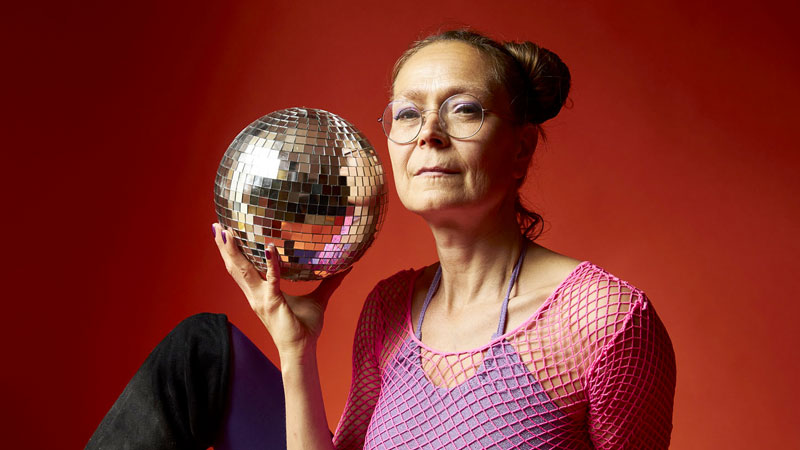
Sara Koppel is an animator, filmmaker, illustrator, new media artist, educator, painter, and author.
Her independent films have been featured in hundreds of animation festivals around the world, and she has appeared in dozens of art exhibitions and augmented reality showcases.
She is a pioneer in animation and art that celebrates human sexuality and body positivity, and she has been selected as the featured artist of the 2022 Viborg Animation Festival.
Sara Koppel’s Background and Beginnings
Born in Copenhagen in 1970, Sara is the grandchild of celebrated composer Herman David Koppel, and the oldest daughter of musician and composer Anders Koppel.
Her aunts and uncles, siblings, cousins, and now her daughter are all accomplished musicians.
But she knew from a young age that this was not the life for her. At the age of 6, she refused further music lessons, and said she wanted to draw instead.
SK: Even as a child, I wanted to make my own way, and didn’t want anyone to control what I did.
I was already a rebel in some ways, but it was also the time: it was the 1970s, and there was so much going on with music and art and culture. I knew I liked to draw, and said that was what I was going to do.
I had a terrible time in school. I changed schools 5 or 6 times. I really couldn’t get it. I had so much trouble sitting still, and had a lot of discussions with the teachers. I didn’t like authority, I didn’t like grown up people. I had a lot of issues in that sense.
I left my parents’ place when I was 12, and I was living on the streets as a punk. I was very young, and I met all these people on the streets, and I was so inspired by the political environment. At that time in Copenhagen there were a lot of empty buildings, before gentrification.
So we would walk into empty houses and decide to live there, occupying them. And of course the police always eventually came and we got kicked out, but that was the choice we were making.
When I was 14, I had to visit a company for school. I was supposed to visit a place where they made and printed art posters, because I thought maybe I would do something with graphic design. But when I came to the place, they thought I was really ugly.
I had a mohawk, and I was quite dirty because of my lifestyle, and they said they just couldn’t have me there. But I had really been looking forward to that week, and didn’t know what else to do, and the school was closed.
From that first day, I thought, “This is going to be my life.”
Sara Koppel
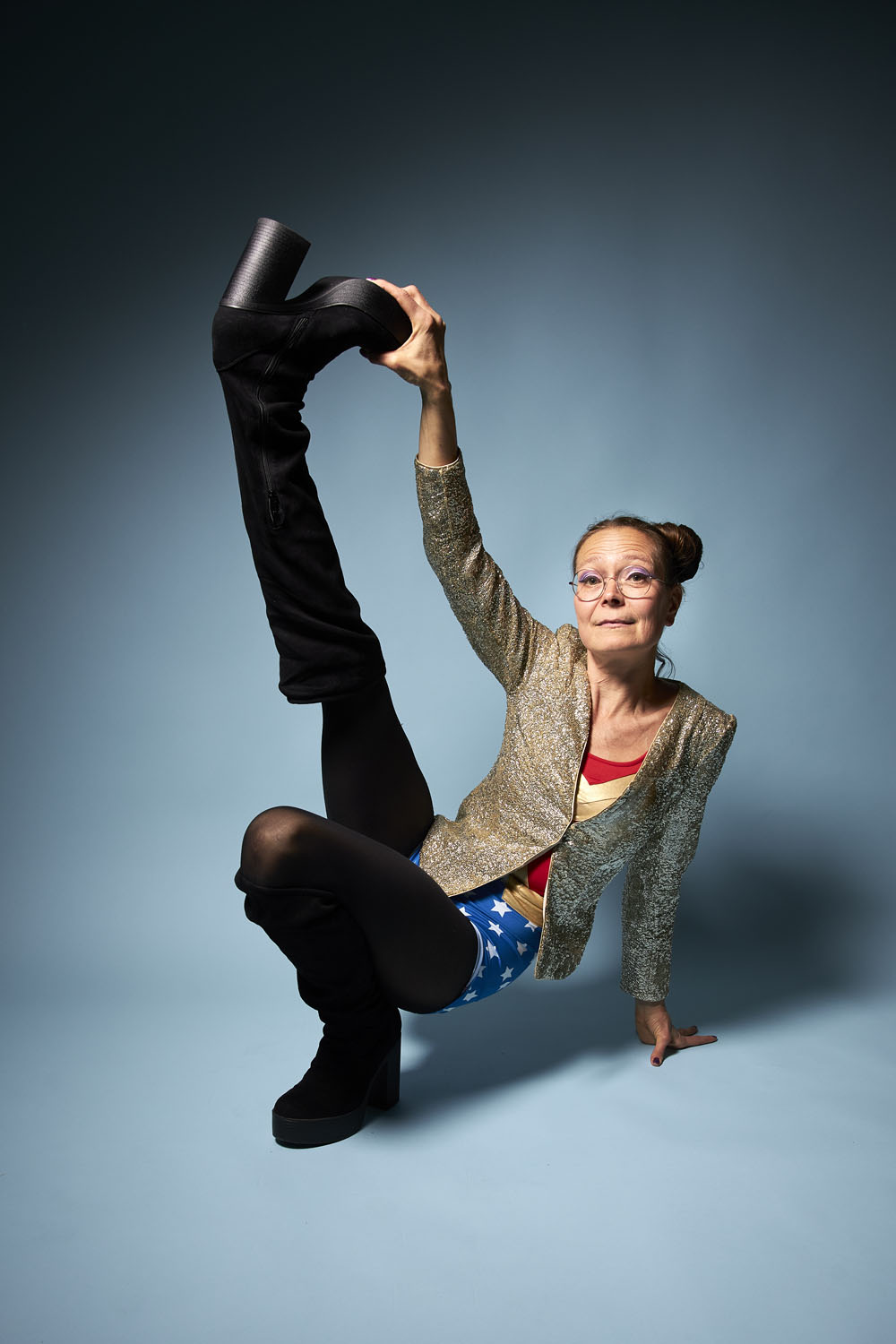
So it was 7 o’clock in the morning, and I called my father, because I knew he was composing music for an animated short film at the time, and thought I could go there.
They agreed to take me that same morning, of course because they knew my father.
So I went there. It was a long short film, like 40 minutes, and they were hand coloring everything on paper with gradient colors. I thought it was so amazing – I didn’t even know that you could do that.
I loved animation, and I loved drawing, but I had never connected them before in a practical way. I just wanted to know everything about how to do it.
And suddenly a lot of my problems just disappeared. When I was making animation, suddenly I could focus, I could sit still.
I am like that to this day: I’m very hyper and energetic, but every time I am animating, I am so focused. It’s like when you meet something that is The Thing, you know?
I stayed there for the week, and I was just so in love with it, so they kept me on for the rest of the film, another 3 or 4 months. I actually never went back to school: I dropped out and never completed my education. I just stayed in animation from that day onward.
After the film was done, they wrote me a letter of recommendation. With that recommendation, I immediately got a job on Valhalla. I was a colorist on that film, painting on cells. Everything has grown from there.
On The Pleasures of Paper
One of the most famous features of Sara’s work is that she still makes animation the old-fashioned way, with pencil on paper. She animates her films herself, drawing every frame by hand. This lengthy process, done alone, makes her prolific catalog of work even more impressive.
SK: Of course I can work digitally, and sometimes do, especially when I’m freelancing on other productions. I actually do a lot of work on the computer, with my coloring and editing processes. I’m not anti-technology, and do a lot of projects where I combine my own work with technology.
But when I am sitting still in front of the computer, some of my issues start to come up, and it’s just not the same. Paper grabs me more.
I like my pencil on the paper, and all the dirt that comes with it, and all the folds and creases in the paper from flipping it. I keep all those folds and lines on the page in my work – I don’t erase it, I keep it, because I like the sensibility it gives.
Sometimes people ask me “What kind of loop did you make for the dirt?” And I’m like “It’s not a loop, it’s a real thing from the original drawings.”
I also don’t like feeling like I’m doing the same thing every day. So sometimes I’m drawing on paper, and sitting in different places or on the floor, and then I can sit with the computer for a few hours doing coloring, and then I can go back.
I can change my routine around, which helps the body and helps with concentration and helps with the work.
I always animate on paper. I started animating on paper, and I still see my drawing skills, my animation skills, my artistic skills continue to develop.
I’m not finished exploring the way my animation looks on paper. Every time it still feels fresh and new.
On Going It Alone
All of Sara’s films are completely self-funded. Although she was just awarded a grant from the Danish Statens Kunstfond, she doesn’t work with film funds at all. I asked her why.
SK: Back when I started making my own artistic short animations, I did start out trying to get funding from DFI. I think the problem with that goes back to my trouble with authority.
I felt like it was so slow, and I didn’t have the patience to wait for their process. When I have an idea, I just want to do it. I don’t want to wait years.
This is my life developing through the making, so I cannot stop my own development as a person because of what someone else thinks.
And when DFI was reviewing my project, all their questions were so un-artistic. They wanted to have everything settled and decided, and know exactly what’s going to happen.
They also wanted to have this dramatic story arc, and wanted to know who would be animating the film.
I really am more of a poet. I don’t want to make a complete storyboard and follow it, I don’t want to make an animatic where all the scenes are already cut.
When I’m working with it, when I feel that it has to unfold, it may become much longer. If it needs to be 30 seconds, then it’s 30 seconds.
This is my work. I want to do it myself – I don’t want to break it into pieces for different teams. Of course I make a kind of storyboard, but my process is more like making some drawings and then making some notes, and sometimes I write a script, but sometimes it’s just a half page of notes with small thumbnails.
These are the very things I love the most about animation. I love doing it, I love making it. It’s not about what comes afterward, or getting some kind of result. If someone afterward wants to see it or likes it, that’s great. But what matters to me is loving it while I’m doing it.
I really don’t care about other people’s opinions, and it’s not because I am arrogant: I really do love people. But I don’t care what they think about my work during the process. In fact, it’s a killer. I am fine with hearing what people think about my work after it’s done, and I am even interested in hearing criticism.
But during the process, I don’t need it and I don’t want to get stuck by it. I don’t want anyone saying that someone’s nose is too big or asking why they move one direction or another.
I am also a working person. I never just sit still with my hand out, waiting for something to come by and drag me along. I drag myself. I am very good at continuing my work flow, and I never sit around wondering what I am going to do.
Of course I sometimes wonder, “Shit. Is what I’m doing any good?” but then I just start drawing with the pencil and it doesn’t matter what people think: I am already in it again.
So that’s why I had to stop working with DFI. It’s too much of a risk for them, apparently, to work with someone who has that loose way of working. It’s a little sad that there’s not room for making other kinds of movies.
I am not good at static situations, and I want to be free, and I do not want to compromise with anything. Naturally if someone wanted to just give me money for a film, and maybe look at it sometimes without interfering with my ideas, then of course it would be welcome.
When you are doing your own animation art, it is not easy to survive financially. I work all around the animation field to make money.
I teach animation, I freelance as an animator on other people’s projects, and I am always looking for ways to make money, because I have rent and food and all those ordinary expenses, and also need to finance my films.
Like, I am about to turn 52, but just a month ago I stopped working as a coffee barista every Saturday. I’m not too good for that kind of work, and I actually think it’s a good thing for me, because I am so much alone with my animation.
Going out and meeting people and doing something else is good for me, and it helps the money go around.
We tell young people that they need to go out and be a success and make a lot of money and have people look up to you, but I really see it differently.
I think we are here for such a short time, and it’s much more important that every day brings something new, and something to learn, and be full of love.
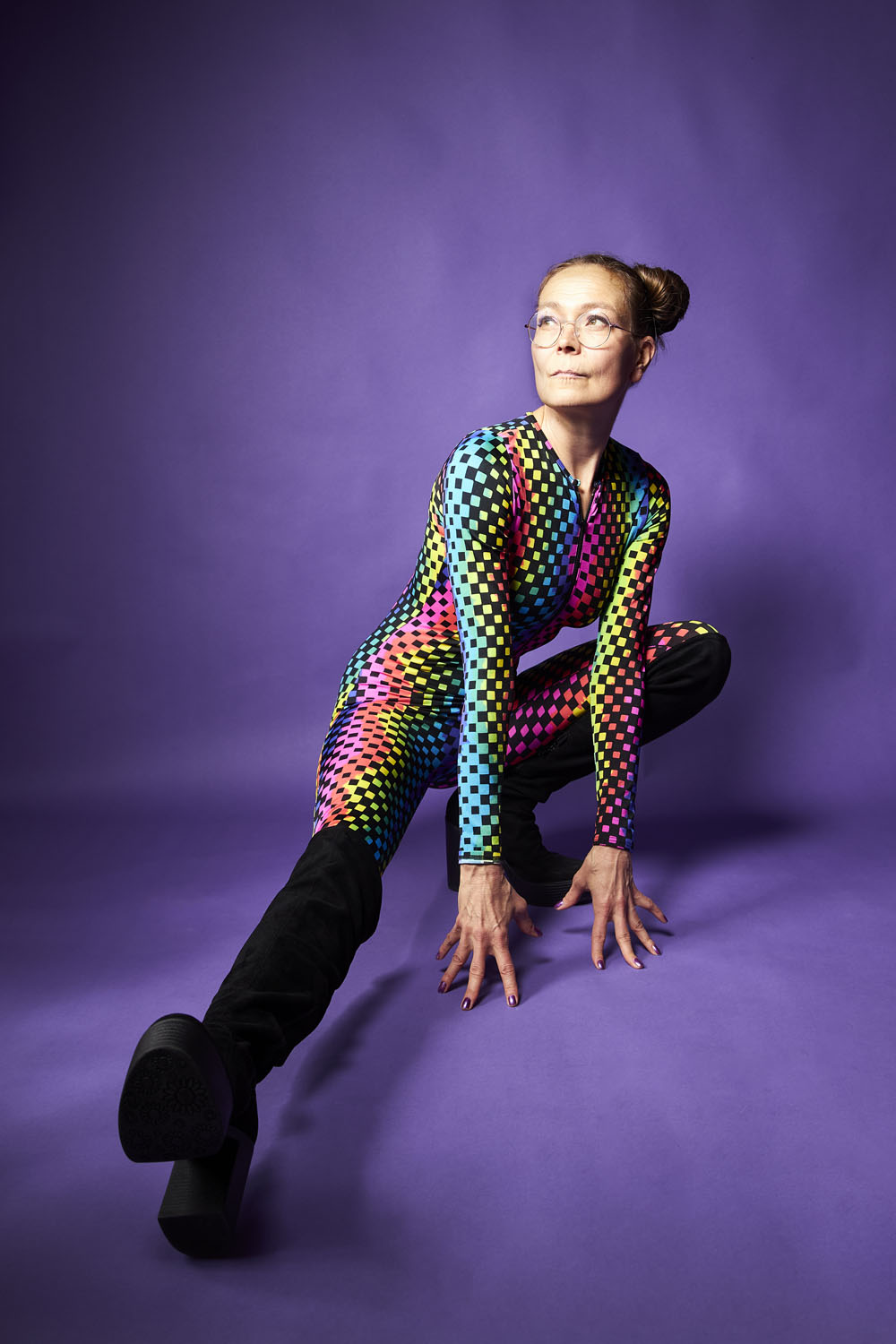
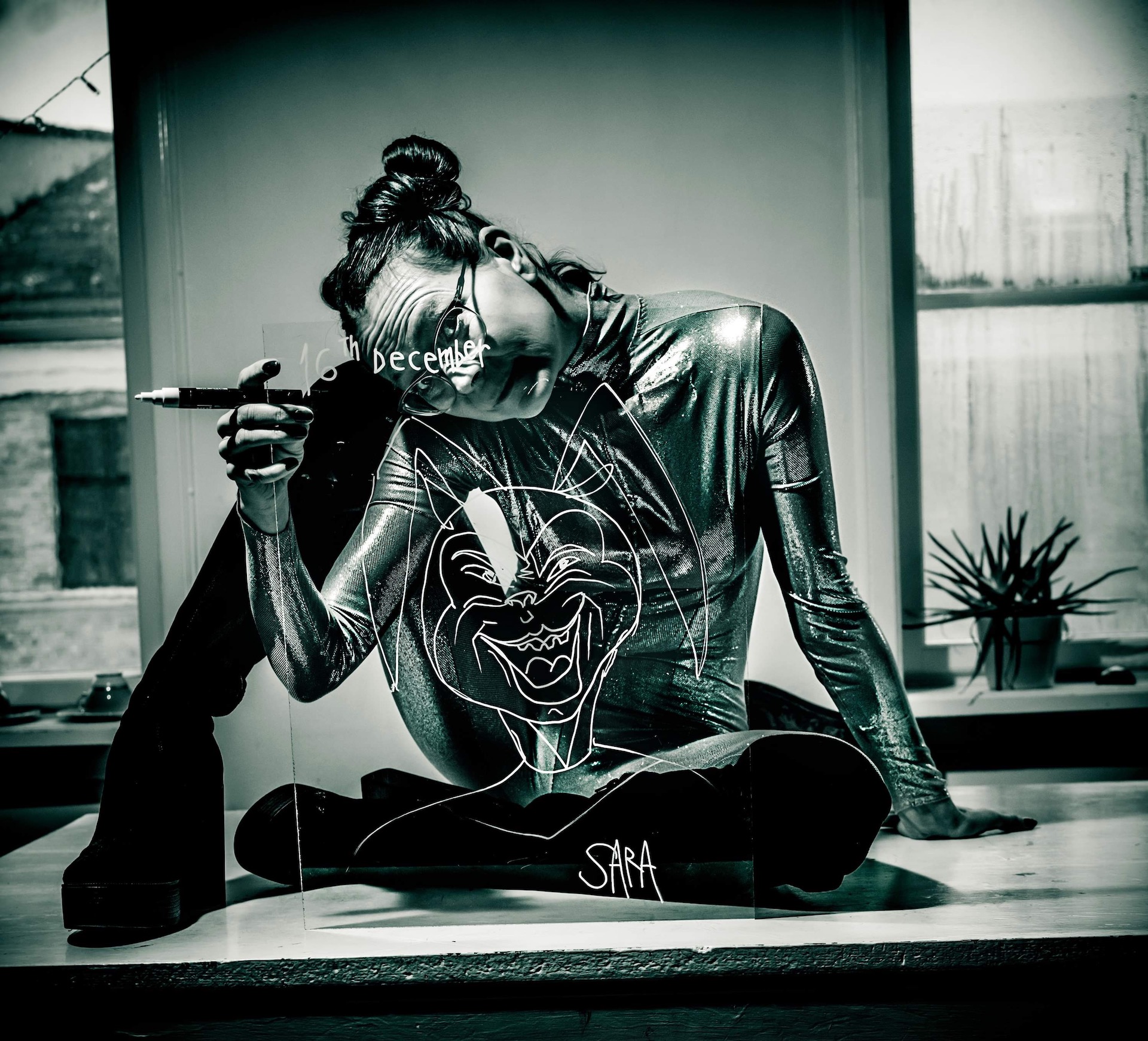
Photo: Kim Wendt. Illustration: Sara Koppel
On Erotic Animation
Sara is a pioneer in erotic animation, with two of her most famous films (Naked Love – Ea’s Garden and Little Vulvah & Her Clitoral Awareness) dealing with women’s sexuality. I asked her about this theme in her subject matter, and where it came from.
SK: My interest in erotic themes started very early, when my dad gave me a series of books by Robert Crumb.
Maybe it was a little too early, but I absolutely loved them. I loved the drawings, I loved the way the stories were told, Fritz the Cat, I was totally into all of it. And of course it was very focused on the erotic, on the nakedness, on the shapes of women… it was my first inspiration.
I like to draw all kinds of bodies, and I actually love to animate flesh and skin and the way they move. The women in my films love themselves, no matter how they look, and I want to show that.
I want to show love for the skin and the shapes and the volumes, and I am obsessed with movement, I want to put all that into movement.
Then, for my 18th birthday, I got a huge very thick book of the history of erotic art, with all the famous painters like Rembrandt and Picasso. I was blown away by that book, and it also really influenced me.
So when I started to make my own animated film, I was very interested in eroticism. I was living an erotic life, and it felt like animation and eroticism go so well together.
When I did Naked Love – Ea’s Garden, I wanted to do something focused on female lust, because I felt it was a little taboo at the time. Things have progressed a lot in the last 10 years, but at that time there wasn’t much erotic animation going on.
I just wanted to make a question mark, a little piece that could open up discussion about the clitoris, about sexuality.
Eroticism is a great subject for animation. With animation, you can show a lot of things. For example, in Little Vulvah there is a scene where she discovers her vagina and her clitoris, and it opens up like a flower, which you can do in animation.
You can make it more poetic, and more graphic, and easier to relate to, because it’s just a drawing. When it’s filmed, it’s much harder for people to look at.
I just wanted to make a question mark, a little piece that could open up discussion about the clitoris, about sexuality.
Sara Koppel
Of course there is an element of the political in this work. I’m never not political, but that’s not my first thought when I’m making my art.
You’re always hoping that your art will have an influence and help to change something, but it can be difficult to see when you are working on it.
It requires so much focus, so I sit and draw the lines. And while I am drawing the lines, I am not political. The very first line may be political, but then you have to focus on all the lines after that.
So there will always be a political tone in what I do, but it’s not a lifted finger, telling you what you have to do. It’s much more abstract, in the sense that all the political thoughts I am having bring an influence to my work.
If I had to boil it down, it’s about love. Love to people, and trust that we can change, and hope for the future.
On Augmented Reality
Sara has created many AR pieces in recent years, featuring them in various exhibitions and showcases. Augmented reality allows her to combine static paintings with animation, bringing her art to life in a new way.
SK: I was always interested in combining paintings with animation. In 2010, I had an exhibition where I had five really large paintings with women on top of each other, and these paintings were featured along with very big animated installations with the same motifs.
What I actually wanted at that time was to combine it, to have the animation inside the painting, but of course you couldn’t do that at the time. So when I discovered augmented reality, and the possibilities, I felt like I really had to try it.
I’m an animator and illustrator and director, the classic combination, but actually I see myself much more as a poet. If my skill was writing, I would just write poetry. But my skill is animation, so I make animation poetry.
In augmented reality, I can make one picture with that poetic sense to it. It’s not a drama with a storyline. I mean, of course I love watching films with storylines, but that’s not my own work. I am much more abstract, because I love the poetry.
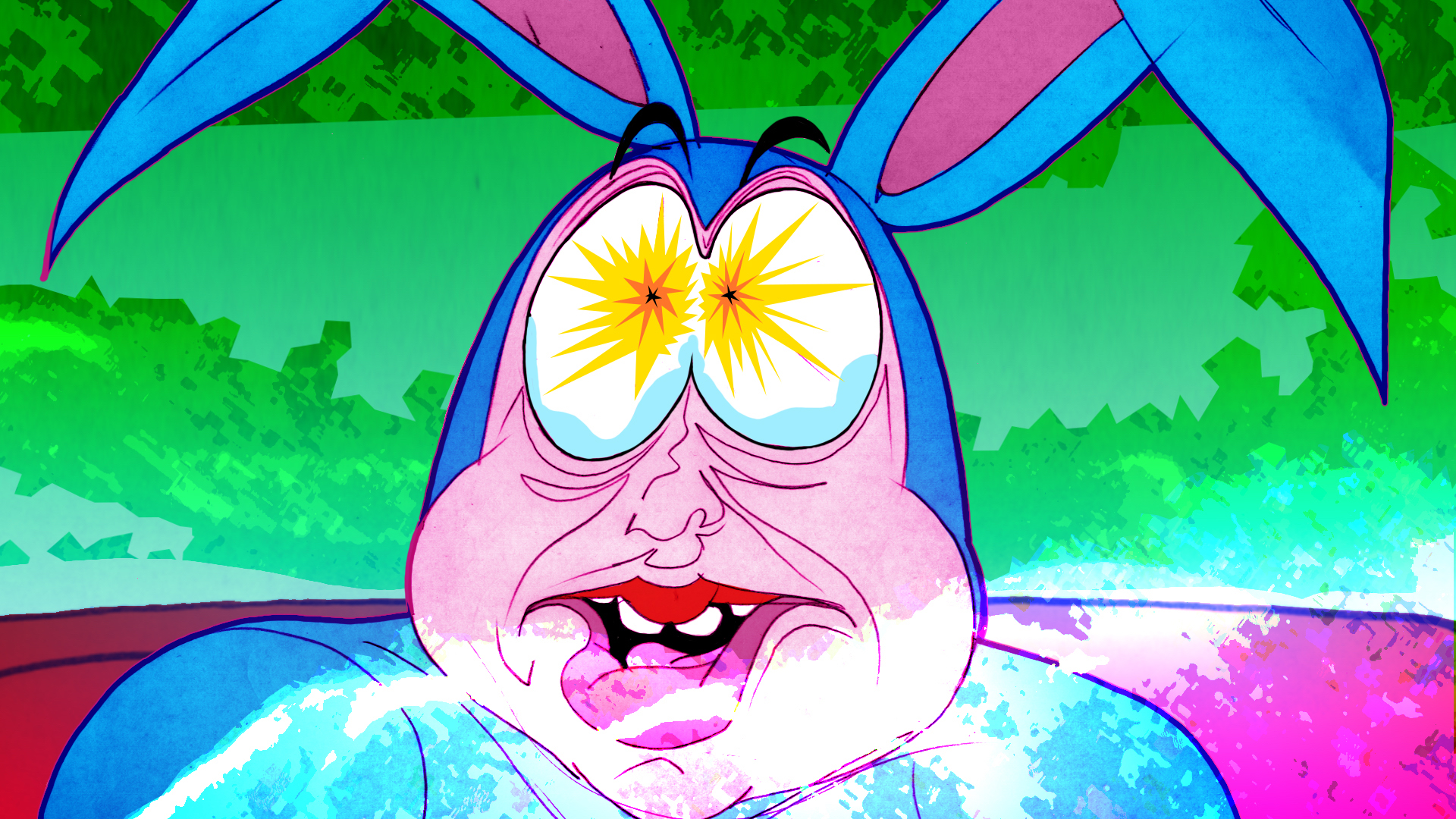
I really am more of a poet. I don’t want to make a complete storyboard and follow it, I don’t want to make an animatic where all the scenes are already cut.
Sara Koppel
It’s important to me that not everything has to have a storyline. Something can just be body poses and movement, as visual poetry. I am trying to make body positivity poetry in my animation.
I have had several augmented reality exhibitions now, where I have made animated pieces with a picture. It’s not a film, it’s just this moment.
I think it’s so amazing to have a print or a painting or a drawing on the wall, and you can just take out your phone and watch some amazing animation. It’s a wonderful combination of analogue and digital art. I am going to do more augmented reality in Cairo later this year.
Speaking of Cairo…
Sara and her husband, composer and musician Sune “Køter” Kølster, have been working more and more in Egypt in recent years. Driven by a shared passion for Arabic music, they have repeatedly traveled to Cairo and held workshops and exhibitions.
SK: My husband is the composer for all my films, and I started wondering if we could get an art exhibition together somewhere in the Middle East to explore more Arabic music and to get inspired.
Because our money situation is what it is, we can’t just afford to travel for holiday, so we have to have a work purpose where it’s possible to get some help or support.
I found an artist residency in Cairo, and we got it and went there for the first time five years ago. We were overwhelmed with how wonderful it was: it’s such an energetic town, with so many people, and with beautiful people and beautiful buildings.
We were both amazed, and we fell in love with the contrast between Cairo and the Scandinavian life we come from. It’s been so inspirational.
We made a new workshop last year, where we went to lots of different places so composers could compose in nature, or in the desert, and I was just sitting animating the whole time.
I don’t want to be locked to a light table.
So I made this little folder with some paper, so I can animate anywhere. I animated the first sequence of my new film out in the desert and on the airplane and on the streets of Cairo, and it wasn’t even roughs: it was finished animation.
I can do the inbetweens when I am back at my light table, but in the meantime I can do it this way.
There is a lot of waiting time when you are working in Egypt. The sense of time there is very different and unstructured, so you may be waiting for a half hour or an hour for people to come or for something to start. Because I am impatient, it’s very hard for me to wait. I didn’t want to keep being frustrated just because people have a different sense of time, so I had to find something beautiful to do while I wait. That’s why I started always having my paper and my pencil in my bag. I can always animate, anywhere and any time.
Last year, I was invited to Cairo to participate in an exhibition at an amazing art and performance festival called D-CAF. So I had my Embraces exhibition, which has all these animals and human beings hugging. It’s about being open and accepting of others.
I think they liked it a lot, because it was just after Corona, and people had missed all that contact with each other, so the piece got a new, even deeper meaning.
I will go back to Cairo and have another augmented reality exhibition at D-CAF, but first I am really looking forward to going to VAF and seeing all the exciting work that is happening in Viborg, and meeting all the people.
This September, Sara Koppel will be the featured artist at the Viborg Animation Festival. The festival will include exhibitions of her augmented reality pieces, a retrospective of her films, and other events that showcase her incredible career and unique artistic perspective.
It will be a rare opportunity to experience the full scope and dynamic range of her work, and to be inspired by Sara’s energy, humor, and passion.
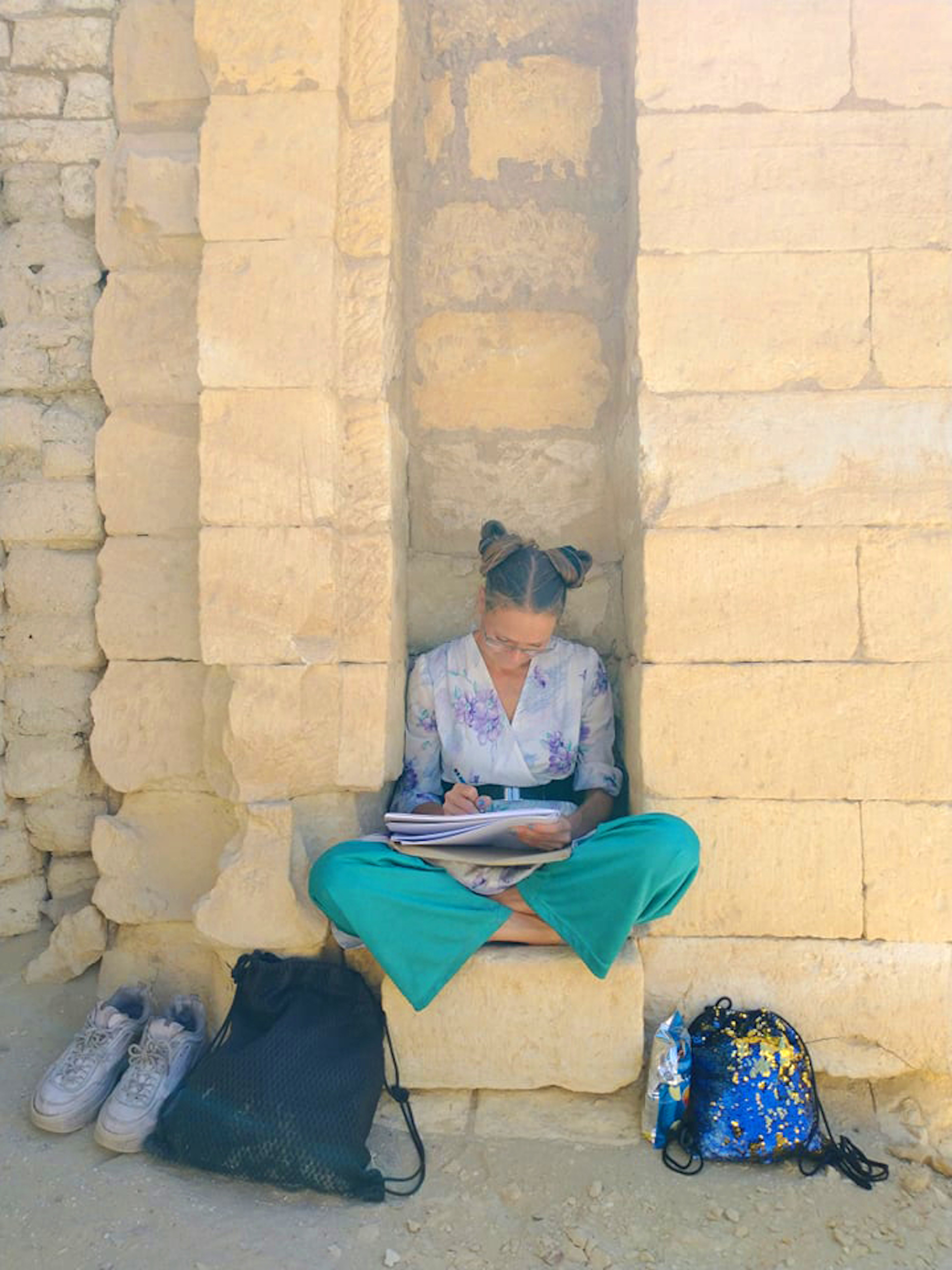
Working in Cairo
Background
Links to more of Sara’s work
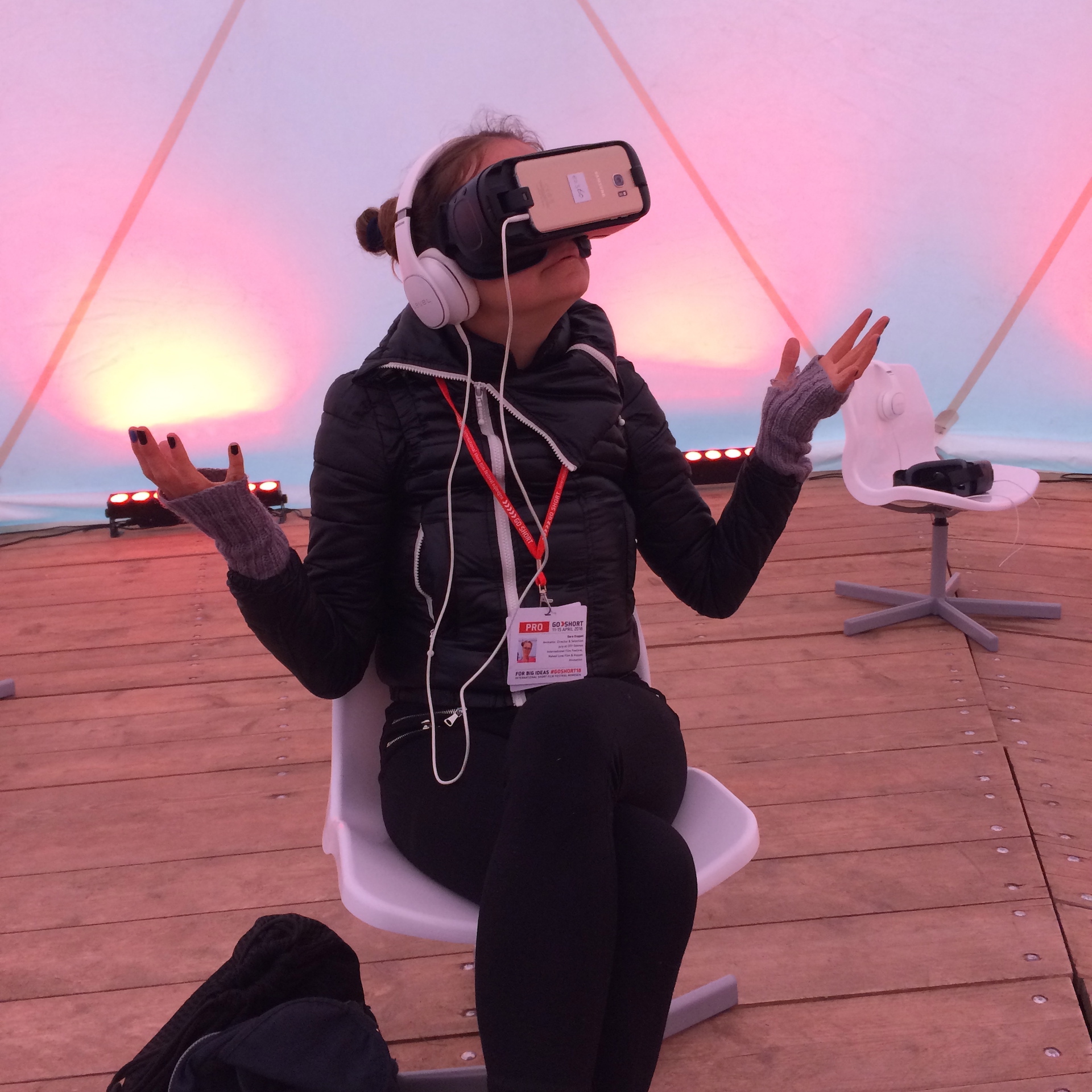
Credits
Words: Rebekah Villon
Photos: Malene Nelting (if nothing else stated)
Artwork: Sara Koppel
Collaborators

WeAnimate Magazine is dedicated to all the people who animate and make things, lines, and ideas come to life.
WeAnimate ApS is founded and owned by The Danish Animation Society (ANIS) www.anis.nu
Tell us what you think? Tell us at hello@weanimate.dk | #weanimate | our Privacy Policy
